Why Animated Video Ads Work
While Animated visuals effectively clarify complex ideas, the true power of an Animated Online Ad Video in achieving marketing objectives unlocks through strategic execution. They offer brands unique avenues to connect with audiences on a deeper level, moving beyond mere product showcases to demonstrating real-world application and solving viewer problems .
Success hinges on more than just captivating graphics; it requires meticulous planning and measurement. Businesses meticulously track investment against returns, evaluating metrics like increases in qualified prospects or reductions in service inquiries, understanding that effective communication directly impacts operational efficiency. Whether a simple explainer or an intricate Animated 3D ad detailing a product, aligning the visual story with measurable goals is paramount. Showing the product integrating seamlessly into existing workflows or daily routines elevates its perceived worth, making the value proposition clear and compelling.
Understanding audience interaction provides actionable insights . Analyzing engagement patterns reveals which parts of the narrative resonate and where attention might wander. This granular look at viewer behavior allows for precise adjustments, refining the message to hold interest and drive action.
- Implement clear, action-oriented calls to action ; vague prompts yield uncertain results.
- Leverage Social proof , like familiar logos or user statistics, to quickly build credibility and trust.
- Continuously test different versions of the ad – headlines, visuals, calls to action – to pinpoint what resonates most.
- Tailor the content and delivery style to the specific platform and viewer intent, optimizing for their unique context.
Combining creative animation with robust strategic planning and continuous optimization is the path to maximizing the impact and tangible value of online video advertising .
Setting Clear Online Video Ad Goals
For those planning an animated ad, establishing clear objectives upfront guides the entire creative and distribution process. Defining specific, measurable goals provides a roadmap for success, ensuring every element serves a purpose aligned with desired outcomes. Thinking about the viewer's journey helps tailor the video's message and its intended impact at a particular touchpoint.
Crafting a compelling message involves showing value authentically. Demonstrating how a product integrates into real workflows or solves specific problems using real-world scenarios makes the offering relatable and valuable. Building trust is vital, and showcasing how a product fits into real workflows or incorporating social proof within an animated brand ad can significantly boost credibility.
Optimizing performance requires a data-driven approach . Analyzing viewer behavior provides insights into what resonates and where engagement drops. A/B testing various elements allows for iterative improvement, maximizing the video's effectiveness across different platforms and environments, ensuring the message lands with the intended audience .
- Use action-oriented calls to action specific to the video's goal.
- Measure ROI by tracking tangible business impacts like leads or efficiency gains.
- Leverage viewer behavior analytics to refine content and structure.
- Systematically A/B test different creative and strategic choices.
Choosing the Right Animation Style
Choosing the right animation style involves more than just aesthetics; it is about aligning creative choices with strategic goals to connect with audiences and drive action. Different styles serve different purposes, from simplifying complex ideas to creating memorable brand personalities.
When considering styles, think about the core message and intended viewer. A quick, impactful animated bumper ad, for instance, excels at grabbing attention on platforms where users scroll rapidly. For more involved explanations of products or services, an animated explainer ad allows for detailed visual storytelling that can clarify value propositions effectively.
Incorporating elements that build trust is key. Using real-world scenarios in demonstrations helps viewers see how a product fits into their lives. Showing how a product integrates into existing workflows or solves specific problems increases its perceived value . Social proof, like displaying logos of well-known companies using the product or sharing user statistics, can quickly establish credibility.
- Clear and specific calls to action are vital. Instead of generic phrases, action-oriented text like "Start Your Free Trial" guides viewers toward the desired next step.
- Measuring success goes beyond views. Tracking production costs against generated value such as qualified leads or reduced support inquiries provides a clearer picture of return on investment.
- Analyzing viewer behavior through tools like heatmaps reveals which parts of a video resonate or cause drop-offs, offering valuable insights for optimization.
- A/B testing various elements, from thumbnails to CTA wording, helps refine what truly engages the target audience and improves conversion rates.
Optimizing for different platforms means considering viewer intent and environment. Content for social feeds needs to be instantly engaging, perhaps even without sound, while videos on a product page can offer more detail.
Crafting Compelling Video Ad Narratives
Crafting compelling narratives for animated online ads moves beyond engaging visuals alone; it demands a focus on guiding viewers towards specific outcomes. Ensure calls to action are not generic prompts but action-oriented phrases directly relevant to the viewer's likely next step, like 'Start Your Free Trial' or 'Request a Demo'. For an animated infographic ad, this clarity in the final ask is paramount after simplifying complex information.
Measuring return on investment involves tracking production costs against generated value – qualified leads gained or sales cycles shortened due to better-informed prospects. Using real-world scenarios helps viewers relate, showing how product integrates into daily tasks or solves problems specific to their industry. An animated motion graphics ad excels at demonstrating dynamic processes or showcasing features in context, building perceived value. Incorporating social proof, like brief flashes of well-known client logos or user statistics, quickly builds trust and credibility.
Understanding audience through data is vital for refining ad narratives. Analyzing viewer behavior reveals exactly which parts are engaging or confusing.
- Utilize tools like heatmaps or attention tracking integrated with video players to identify segments viewers watch, rewatch, or skip.
- Conduct A/B testing different elements such as thumbnail image, initial seconds of content, CTA wording or placement, or even script variations.
- Optimize content for different platforms and viewing environments; social feeds may require sound-off comprehension using text overlays, while product pages allow slightly longer, detailed content assuming higher viewer intent.
- Strategically integrate social proof elements directly into the ad narrative to enhance believability and encourage action.
Iterating based on performance data and viewer insights refines narrative approach for higher conversions.
Seamless Brand Integration in Video Ads
Brands strive for meaningful connections, weaving their identity seamlessly into animated campaigns. This involves strategic planning for every visual piece. Consider how an animated pre-roll ad captures attention instantly on a busy feed compared to an animated product ad providing detailed information on a dedicated page. Different goals demand tailored approaches for maximum effect.
Guiding viewers towards a next step feels crucial. Clear calls to action at a video's conclusion move beyond vague prompts. Instead of generic "Learn More," specific action-oriented text like "Start Your Free Trial" or "Download the Report" aligns directly with the video's purpose and the viewer's likely stage in their journey, enhancing conversion potential.
Measuring the impact demonstrates real value. Brands track production investment against results. Building viewer connection also involves showing products in relatable, real-world scenarios, demonstrating features within relevant contexts. Analyzing viewer behavior through heatmaps reveals precise engagement points. Incorporating social proof swiftly builds credibility and trust.
- Tracking increased qualified leads shows clear effectiveness.
- Highlighting how a product integrates into existing workflows increases perceived value.
- Analyzing data from viewer heatmaps pinpoints confusing sections or drops in interest.
- Featuring client logos or user statistics builds trust quickly.
Continual optimization through A/B testing different elements, from opening seconds to CTA placement, uncovers what truly resonates with the target audience. Platform differences also matter; videos for social feeds need instant impact, often understandable without sound, whereas content on a product page assumes higher viewer intent and can offer more depth.
Targeting Your Video Ad Audience Precisely
Connecting with the right viewers requires more than just compelling visuals it demands a strategic approach to placement messaging and desired actions. Businesses must refine their animated online ads to resonate deeply with specific audience segments, ensuring every view moves them closer to a meaningful outcome. This precision involves understanding not just who the audience is but how they interact with content on different platforms and what motivates them to act.
A critical element is the clarity of the call to action. Generic prompts yield less impact than specific directives tailored to where the viewer sits in their journey. Asking viewers to start a free trial or download the report provides a clear next step directly relevant to the video's content and the user's potential interest.
Measuring the true value generated by animated ads goes beyond simple views. It involves tracking tangible results. Businesses assess the return on investment by comparing production costs against gains like an increase in qualified leads or a reduction in support inquiries, indicating well-informed prospects. Analyzing viewer behavior offers deeper insights heatmaps and attention tracking reveal which moments captivate or cause drop-offs, invaluable data for refining content effectiveness. Incorporating social proof, perhaps showing logos of well-known companies using the product, can quickly build trust and credibility with potential customers.
Testing different approaches provides actionable insights into audience preferences. A/B testing various elements such as the thumbnail image, the crucial first few seconds, the wording or placement of the call to action, or even minor script adjustments reveals what drives higher engagement and conversions. When crafting an animated social ad, grabbing attention instantly is paramount, often requiring concise messaging. Videos for social feeds need to be impactful even without sound using text overlays becomes essential. Conversely, a more detailed video embedded on a product page can assume higher viewer intent. Testing different versions of an animated short ad can reveal which creative elements resonate most effectively with mobile users. Optimizing creative elements through systematic testing helps enhance overall ad performance.
- Implement clear, action-oriented calls to action aligned with video goals.
- Measure ROI by tracking production costs against generated value like qualified leads.
- Showcase product features within relatable, real-world scenarios.
- Analyze viewer behavior using heatmaps and attention tracking tools.
Connecting these strategic components allows for continuous refinement, ensuring animated video advertising effectively captures attention and drives desired business outcomes.
Measuring Animated Ad Performance Metrics
Marketers understand creating compelling animated advertisements is only the first step; measuring their impact proves their value. Performance metrics provide the data needed to refine creative choices and optimize effectiveness. Crafting clear calls to action is paramount, guiding viewers toward the desired next step using action-oriented language precisely tailored to the video's objective and the viewer's journey stage. Understanding how viewers respond even to a specific format like an animated whiteboard ad provides valuable data for refinement.
Measuring Return on Investment goes beyond simple view counts, focusing on tangible value generated. This involves tracking production costs against outcomes like increased qualified leads, a shorter sales cycle due to better-informed prospects, or decreased support volume from users who grasped features from the video. Different video types serve distinct goals; an animated awareness video aims primarily for reach and engagement, while others focus directly on conversions, requiring tailored ROI analysis.
Analyzing viewer behavior offers deeper insights into how audiences consume the content. Using tools like heatmaps reveals precisely which video segments hold attention, are skipped, or rewatched, helping identify confusing points or areas of high interest. Demonstrating product features within real-world scenarios and showing integration into existing workflows makes the offering more relatable and believable, impacting how viewers engage. Marketers also test variations to learn what resonates most effectively.
Building credibility is key, often achieved by incorporating social proof. Brief flashes of well-known company logos using the product or mentioning statistics about the number of satisfied users can quickly build trust. Adapting video content for different platforms is crucial, considering viewer intent and environment; social media feeds demand instant attention, while a video embedded on a product page assumes higher intent. Continuous analysis and adjustment based on these insights drive sustained performance improvements.
Designing Effective Video Ad Calls to Action
Guiding viewers toward the next step requires careful design of the closing moments and the actions requested. Readers aim to craft specific calls to action that resonate clearly, moving beyond generic prompts to action-oriented phrases like "Start Your Free Trial" or "Download the Report," aligning precisely with the video's purpose and where viewers stand in their journey. Measuring the true impact extends past simple view counts; readers track ROI by assessing production costs against tangible value generated.
Value takes many forms. Increased qualified leads demonstrate reach effectiveness. A reduced sales cycle length shows improved prospect understanding. Even decreased support tickets from users grasping features via the video represent significant gain. To boost this perceived value, make product demonstrations highly relatable. Show features operating within realistic scenarios, illustrating seamless integration into existing workflows or effectively solving specific, everyday problems users face. To truly make product features resonate, consider how elements from an animated case study video can illustrate how the product successfully solves real user problems in practice.
Understanding viewer interaction is key to refinement. Analyzing viewer behavior using tools like heatmaps reveals exactly which parts of a product tour engage most, or where interest drops off before the call to action. This data pinpoints confusing segments needing clarity. Building trust also plays a crucial role. Beyond the initial impression, showcasing elements from an animated brand video, perhaps highlighting testimonials or awards, strengthens credibility just before the final call to action. Incorporating social proof, such as brief flashes of recognizable company logos using the product, quickly builds viewer confidence.
- Implement A/B testing on various video elements – thumbnail, opening seconds, CTA wording or placement – to discover what resonates most effectively with the target audience and drives higher conversion rates.
- Adapt video content and calls to action thoughtfully for different platforms, considering viewer intent and typical viewing environments.
- Optimizing for social media feeds means ensuring the core message and call to action are quickly understandable, even without sound, for those rapid scroll sessions.
- Videos placed on product pages, conversely, can assume higher viewer intent and allow for slightly longer, more detailed explanations before the conversion prompt.
By meticulously designing the call to action, rigorously measuring outcomes, analyzing how viewers engage, and strategically optimizing based on platform and testing, readers transform animated videos into powerful conversion tools, ensuring their creative efforts deliver measurable business results.
Understanding Online Ad Display Contexts
Engaging audiences online involves more than just creating visually appealing content; success hinges on understanding where and how those animations meet potential customers. They appear across various platforms, from social feeds demanding instant attention to dedicated product pages where viewers seek detailed information. Tailoring the message and format for these distinct environments is paramount, ensuring the animation resonates effectively whether someone is idly scrolling or actively researching. Recognizing viewer intent at each touchpoint helps shape the creative approach and strategic placement, moving beyond a one-size-fits-all mindset.
Crafting animated content requires a clear purpose, which directly influences its structure and ultimate call to action. Vague prompts like "click here" often fall flat. Instead, effective animations guide viewers toward specific, relevant next steps aligned with the viewer's likely position in their journey, such as exploring a service with an animated explainer video or seeing a product in action through an animated demo video . Measuring the tangible business impact, the return on investment, goes beyond simple view counts; it involves tracking how these videos contribute to concrete outcomes like generating qualified leads or enhancing understanding of complex features .
To truly maximize effectiveness, creators must delve into viewer behavior. Tools like heatmaps reveal which moments capture attention and where interest might wane, providing data-driven insights for refinement. Incorporating elements of social proof, such as showcasing recognizable logos or user statistics, builds trust quickly. Furthermore, continuously refining ads through A/B testing different visuals, messaging, or calls to action allows for iterative improvements based on real audience responses.
- Utilizing specific, action-oriented calls to action at the video's conclusion directs viewer energy purposefully.
- Showcasing products or services within relatable, real-world scenarios enhances perceived value and believability.
- Analyzing granular viewer interaction data helps pinpoint confusing sections or moments where engagement drops.
- Strategic A/B testing of various creative and structural elements provides critical data for optimizing performance across different display contexts.
Ultimately, the most successful animated online ads are those thoughtfully designed and strategically placed, with clear objectives and a commitment to understanding how audiences engage with them across the digital landscape.
The Importance of Video Ad Length
Understanding optimal duration significantly influences an animated online ad video success. Varying platforms and audience intent mean there is no single perfect length, but rather a strategic choice based on where viewers encounter the ad and what action creators hope they will take. Tailoring length ensures the message lands effectively before attention wanes, a critical factor whether crafting a brief promotional piece or a more in-depth explanation.
Effective videos guide viewers towards a specific next step. Clear and specific calls to action are vital, particularly towards the end of the content. Moving beyond generic prompts encourages direct engagement, using action-oriented text relevant to the video's objective and the viewer's stage in their journey. Creators must also track the return on investment, comparing production expenses against the value generated through increased qualified leads or reduced support queries from well-informed prospects who understood details, perhaps gleaned from watching an animated how-to video . Showing real-world scenarios and demonstrating features within relevant contexts makes a product tour more relatable and believable, increasing its perceived value by showing integration into existing workflows.
Analyzing viewer behavior provides invaluable insights.
- Heatmaps and attention tracking reveal exactly which parts viewers watch or skip.
- This granular data identifies confusing segments or points where interest drops.
- Incorporating social proof, such as brief flashes of well-known company logos or user statistics, builds credibility and trust quickly.
- A/B testing different elements like the thumbnail, initial seconds, or CTA wording yields significant understanding of what resonates with the target audience.
Optimizing for different platforms necessitates considering viewer environment. Videos intended for social feeds must grab attention instantly, potentially working without sound, and remain shorter, like a punchy animated feature video. In contrast, a video embedded on a product page assumes higher viewer intent, allowing for slightly more detailed content to fully inform a prospect. Continuous analysis informs better creative decisions, maximizing impact within chosen length constraints.





































